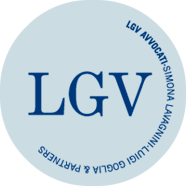REGISTERING SOUNDS, MOVEMENTS, MULTIMEDIA AND HOLOGRAMS AS TRADEMARKS – THE CONSULTATION PROCESS OF THE CONCERNED CIRCLES WITH THE GOAL OF ACHIEVING AN HARMONISED PRACTICE IN THE ASSESSMENT OF VALIDITY REQUIREMENTS HAS BEGUN
15/10/2019
With Directive no. 2015/2436 the European Union has provided a framework for the regulation of new types of trademarks, responding to an increasingly widespread practice of exploiting modern forms of communication for marketing. Italy implemented the directive by Legislative Decree no. 15/2019, which, inter alia, abolished the requirement that a sign, in order to be registered as a trademark, must be capable of being represented graphically. With the prospect of registering new forms of trademarks, a series of questions still remain unanswered, such as, for example, that of intrinsic distinctiveness or the descriptiveness of new forms of trademarks. A consultation open to all interested parties and aimed at arriving at a concerted and harmonized practice will be concluded within mid-November.
In the context of European Union law, the implementing regulation no. 626/2018 of the Regulation on the European Union trademark clarifies that the trademark may be represented in “any appropriate form using generally available technology”, provided that it can be reproduced in the register in a “clear, precise, self-contained, easily accessible, intelligible, durable and objective manner”. This should enable the competent authorities and the public to determine with clarity and precision the subject matter of the protection afforded to its proprietor. However, these aspects – also known as Sieckmann criteria – have not (yet) been defined more precisely. In addition to the application of these criteria to new types of trademarks, the consultation also concerns the question of how any discrepancies between the representation and description of the trademark can be assessed or how priority claims should be examined when at least one of the trademarks belongs to a new type. The consultation is not limited to the examination of absolute grounds of validity but also addresses the examination of relative grounds of invalidity. There is no established case law as to how the comparison between two new types of marks should be conducted or if only one of the marks to be compared is of the new type.
The consultation, which is open until 14 November 2019, offers the opportunity to participate in the development of shared criteria. In view of the increasingly crowded space in the field of traditional trademarks, the registration of new types of trademarks offers important economic advantages, as demonstrated by a recent analysisconducted by EUIPO in collaboration with the EPO.
